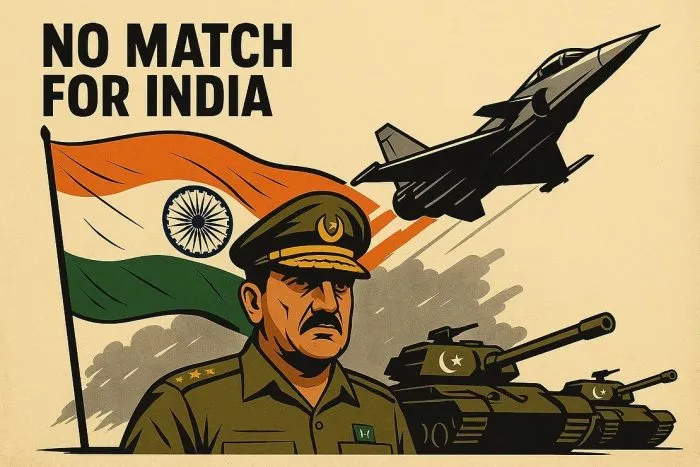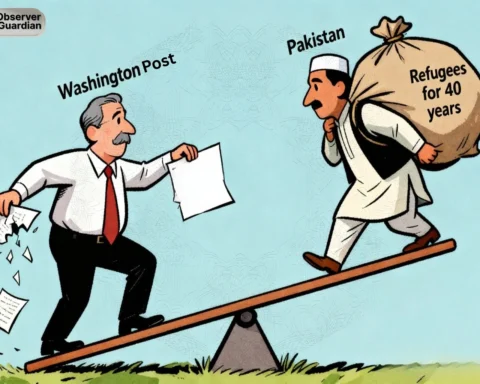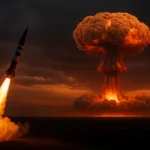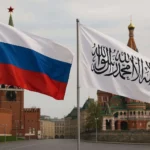India which was once vehemently voiced as an emerging state that could be a future leader of the Global South and provide a threat to other players in geopolitics is having a reckoning in a not so sober state. Its own self-praise to a notch higher as a Vishwa guru, or guru of the world. Now appears not only over blown but woefully ironic since the events of the last few days have revealed all the emptiness beneath its self-grandiosity. The military fiasco in Pahalgam the worsening of economic crisis that is fingered by the Global Multidimensional Poverty Index (MPI) and increasing diplomatic seclusion are the combined fissures that have wounded the myth of Indian exceptionalism. These incidents highlight a painful reality of the fact that India never rose to glory on the basis of strength but did so on the basis of optics, theatre and neatly manufactured image that has been propagated by the Modi government.
Front and centre in this unravelling was Operation Sindhoor which was largely a military publicity operation that was initiated in the Pahalgam standoff. It was predicted to be the moment of precision warfare and control of the whole area over Line of Control (LoC), but turned into the act of shame in no time. This caught the Indian Air Force (IAF) off guard in spite of India exhibiting high profile purchase of such aircraft as French Rafale fighter planes, which the Indian government has been slickly promoting as game changer assets. It did not gain air superiority, and was unable to surprise its opponent. Rather it is the well calculated and professionalized retaliation of Pakistan that reflected the overrated states of Indian military strength. The harm was not just strategic but it was image.
Worse still was the post conflict response of the political and military leadership. In the place of responsibility or introspection lay creepy silence in Delhi. The desperate spin achievement of the Prime Minister’s Office (PMO) was in full swing and the military top brass were kept silent by too much political micromanagement. Operation Sindhoor which was at one time pronounced as a quick and clean surgical strike was soon lost in the discourse by government spoke person who have deployed such operations in their favour domestically to win elections. The operational failure was only one of the things that was on display, a corrosion of both institutional autonomy and professional military judgment, only that the regime was so concerned with controlling all the narratives that this corrosion was smothered. In the meantime, the Pakistan reaction was very different, civil but straight forward and productive. Whereas India became bombastic and manipulated the media. It was through the effective and timely retaliation that Pakistan confirmed its stand on deterrence defiantly and without any fuss. It did not have to fly jets and shout victory slogans. The visible destruction it caused and the restraint practiced by it was all that it took to garner applause in the home territory and abroad alike. BBC said that Pakistan gained back deterrence within hours, and Le Monde called out Indian refusal to scale back emulation of prestige by over reliance on the imported prestige over the state of readiness. The Washington Post termed the Indian misadventure as a lesson that realized the boundaries of spectacle and strategy further reinforced through the argument that the true power is not in words but follows laws of professional performance.
At the economic front, the MPI posted report on the developmental pathway of India. Despite the inclusive growth and digital empowerment Modi has been claiming the report exposed the truth of millions who are languishing in poverty, income inequality has been rampant and availability of basic facilities remains dangerously skewed. India is far from being a model economy and now people are pointing at India as an example of how headline growth numbers may refer to serious structural rot. And what is especially telling is that the economic and diplomatic vulnerability of India appear to be indeed linked.
An example of contradiction is the so-called Doval Doctrine after a National Security advisor Ajit Doval. The doctrine which drew on the concepts of coercive diplomacy, pre-emptive aggression and information warfare has ruled the strategic thinking in India over the last one decade. But the consequence of its actions has been disastrous. More than staving off its territorial boundaries or regional dominance. India is facing a situation of diplomatic isolation and military humiliation. Modi was too into the spectacle, foreign approval and his act of sycophancy most aptly exemplified by the likes of Howdy Modi with Donald Trump and his obsession with pleasing the greatest number of people by curbing independence. The relationships between India and neighbouring countries such as Nepal, Sri Lanka and Bangladesh are tense, its relations with China have never been good and its so-called strategic partnerships in the West have been getting transactional.
International criticism has been increased even further. Magazines that had supported the Indian democratic experiment of goodwill are raising the red flag. The Guardian to The Economist has gone through the story of a woman with admiration to one of apprehension. Rahul Gandhi, one of the very few opposition voices left has termed the recent crisis as a lethal combination of arrogance and incompetence. Even media houses which are typically conservative in outlook such as The Hindustan Times described Operation Sindoor as a failure in terms of military preparedness and political judgment and with such statements the gaps in the propaganda wall are getting wider.
The situation that India is currently under is a test of truth. The fiasco at Pahalgam the loss of the Rafale jets, the damning indictment by the MPI, the forced ceasefire are not ones off the shelf. They are the effects of a larger illness, the island brain washed by the myths of itself caught in the circle of jingoism and national oblivion. The allies as well as the enemies can now see the internal weakness of India. It has lost a lot of its sovereignty because of its reliance on imported defense materials, it has enervated its military through politicization and it has crippled its economy through exclusionary policies. Instead of having a superpower (at least a super potential) on its hands, India is rapidly evolving into a classic lesson in overhype and bad governance overcoming the best of intentions. The implications will be far reaching in case he proceeds on this track. Not only will India lose its right to lead the region but it will also be in a constant state of lagging behind in terms of preparedness as it consists of but with no results, no action, only a tout. By comparison Pakistani management today of the crisis since its formation has been serious, tactical and drama free which is a state craft lesson that New Delhi should learn.
Ultimately as it turns out the mask has been lost. India is not kidding the world anymore, at least not kidding itself anymore. The American Dream has been changed to the reality of systemic decay. The myth of military invincibility smashed into pieces in the debris of Rafales. And the illusion of economic greatness is falling behind against poverty and exclusion. India under Modi is in a dilemma; it can be either a country that can fix the situation and ensure that it never repeats itself or become a country that will stagnate even more into its world of magnified self-importance that has long been lost to civilization. It is no longer time of spectacle. The reckoning years have set in.







